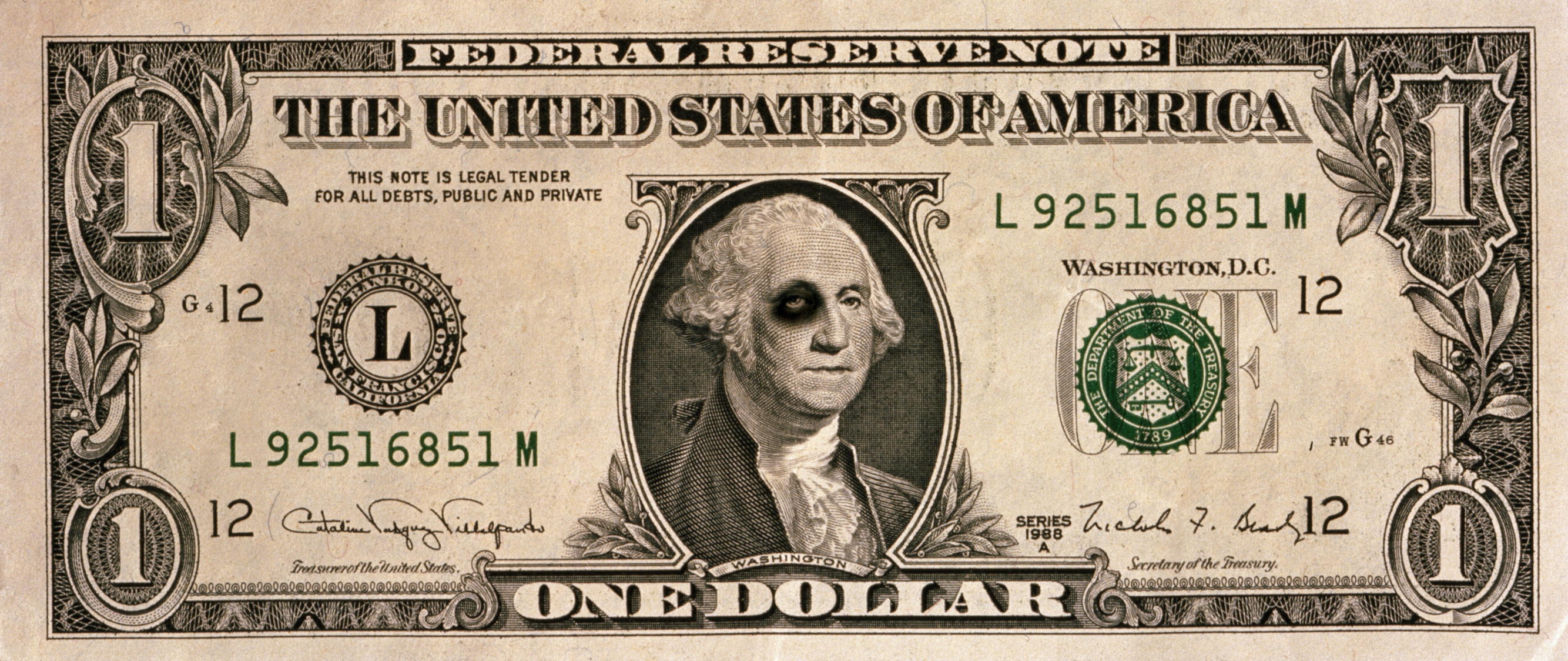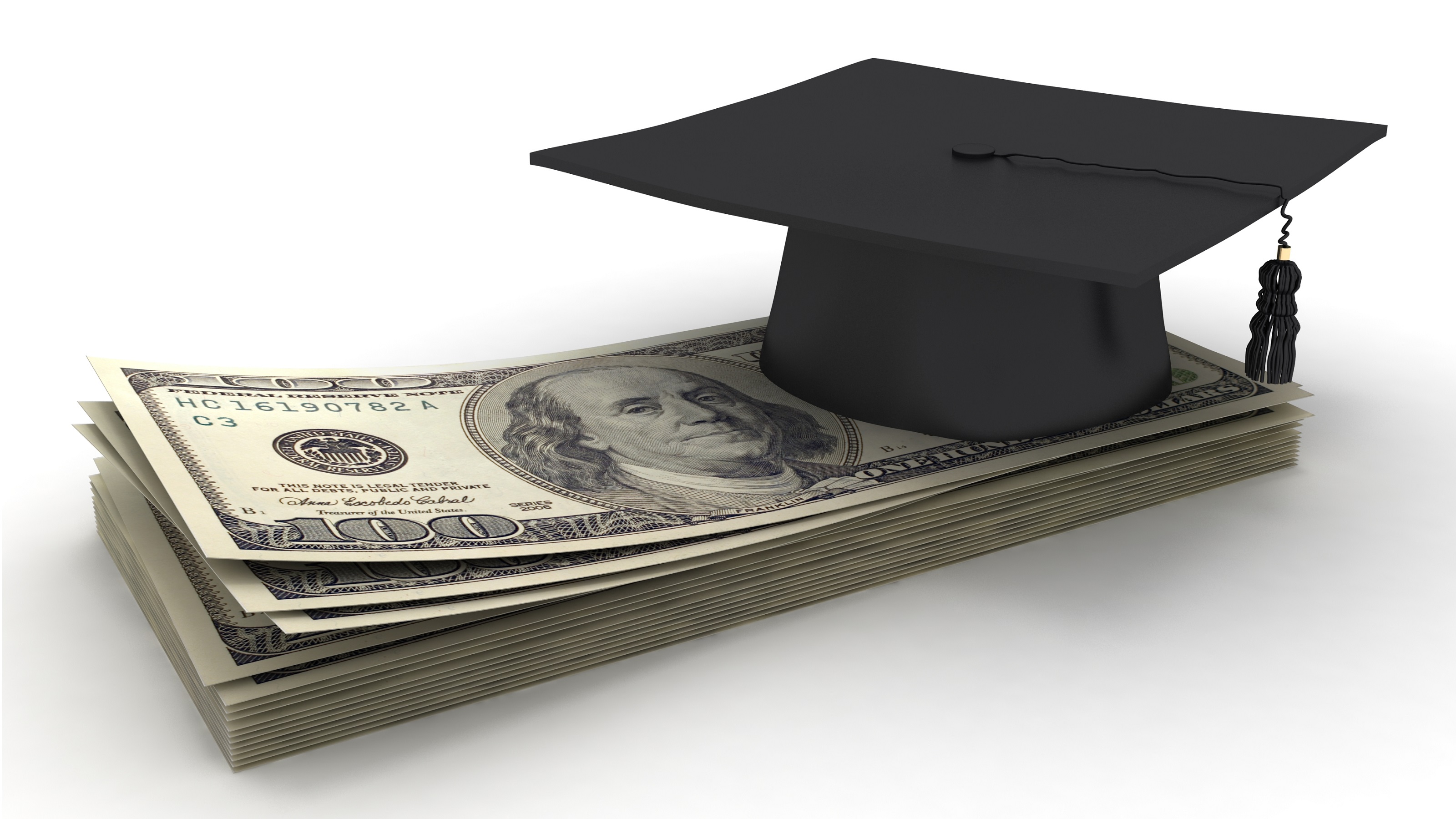The Right Way to Borrow for College
You don’t need to jeopardize your student’s future, or your own, by taking on too much debt.


Editor's note: This article originally appeared in the November 2014 issue of Kiplinger's Personal Finance.
You’ve no doubt heard stories about recent college graduates with minimum-wage jobs and six-figure student loans. Or parents who can’t afford to send their children to college because they’re still paying off their own student debts.
These tales, while troubling, are the exceptions. About 40% of student loan borrowers had balances of less than $10,000 in the first quarter of 2012, according to the New York Federal Reserve. About 30% owed between $10,000 and $25,000. Only 3.7% had balances of $100,000 or more. And given the widening chasm between income earned by college graduates and those without a degree, college remains one of the best investments you’ll ever make, even if you need to borrow to earn a diploma.

Sign up for Kiplinger’s Free E-Newsletters
Profit and prosper with the best of expert advice on investing, taxes, retirement, personal finance and more - straight to your e-mail.
Profit and prosper with the best of expert advice - straight to your e-mail.
The key is to do it wisely, which means borrowing as little as possible and finding loans with the best terms available. That’s what Martha and Ken Odegard of New Berlin, Wis., are trying to do. Their younger daughter, Lauren, a senior in high school, wants to attend a small private college and eventually go to medical school. “It’s been her goal forever,” Martha says.
Although the Odegards want to help, they are also saving for retirement and, because they’re self-employed (Ken owns a home-remodeling business), they spend more than $27,000 a year on health insurance. Their older daughter, Stephanie, attends a public college in-state, so the Odegards have been able to pay her tuition without borrowing. That’s probably not going to be the case with Lauren. She’s willing to take out her share of student loans, but “we’re trying not to get into too much debt,” Martha says.
Take federal loans first
For the Odegards and most other families, keeping debt manageable means starting with federal government loans. Not only do federal loans offer flexible payment programs, but they also allow borrowers to postpone payment for a time—say, if a borrower is unemployed. Plus, under some circumstances, the loans qualify for loan forgiveness. In addition, federal loans offer more protection against catastrophe than some other loans do because they can be discharged if the borrower dies or becomes disabled.
Since July 1, 2010, all federal student loans have been issued directly through the U.S. Department of Education. To have access to these loans, you’ll need to fill out the Free Application for Federal Student Aid (FAFSA), which is used by the federal government, states and some colleges to determine how much financial aid a student will receive. Because the FAFSA can be the starting point for all financial aid, you should fill out this form even if you don’t expect to qualify for need-based aid, says Susie Bauer, a college savings expert for Baird’s Private Wealth Management Group.
Perkins loans. These federal loans are administered by colleges and based on economic need. Not all colleges offer them. They carry a fixed rate of 5%, and the government pays the interest while the borrower is in school. Eligible undergraduate borrowers can receive up to $5,500 per year, for a maximum of $27,500. Borrowers get a nine-month grace period after graduating (or leaving school) to begin repaying the loans and have 10 years to pay them off. Perkins loans can be eligible for forgiveness.
The interest rate for Perkins loans is slightly higher than the current rate for Direct loans (formerly known as Staffords). But Perkins loans charge no fees, compared with a fee of about 1% for Direct loans—and Direct loan borrowers have only six months after graduation to start making payments.
Direct subsidized loans. Like Perkins loans, these loans are based on need, and the government pays the interest while the borrower is in school. The interest rate for loans disbursed between July 1, 2014, and July 1, 2015, is 4.66%. That rate remains the same for the life of the loan; the rate for new loans, based on the 10-year Treasury note, is recalculated every year on July 1. The maximum you can borrow in subsidized loans is $3,500 for the first year, $4,500 for the second year, and $5,500 for the third year and beyond, up to a maximum of $23,000 for undergraduates.
Direct unsubsidized loans. These loans are available to all undergraduates, without regard to financial need. The current rate is 4.66%, the same as for subsidized loans, and will be reset next July 1. Unlike subsidized loans, the government doesn’t pay the interest while the borrower is in college. Most students can borrow up to $5,500 the first year, $6,500 the second year, and $7,500 the third year and beyond, up to an undergraduate maximum of $31,000. If you receive a subsidized loan for less than the maximum borrowing amount for a particular year, you can take out an unsubsidized loan for the balance.
The financial aid offer you receive from a school could include Direct subsidized, Direct unsubsidized and Perkins loans—for a total of up to $13,000 a year, depending on your year in college and your economic circumstances.
Parent PLUS loans. Most federal loans are made to students, but there’s one option on the menu for parents: a PLUS loan. Parents who take out a PLUS loan can borrow up to the full cost of their child’s college attendance, minus any financial aid. (Graduate students are also eligible for PLUS loans.)
Before heading down this road, pull over and consider whether you can afford your child’s dream school. Families who need to borrow more than they can obtain through federal Direct loans “are looking at the wrong schools,” says Paula Bishop, a financial aid adviser in Bellevue, Wash. (See How Much Student Debt Is Too Much?)
The PLUS loan interest rate for 2014–15 is 7.21%. That rate is fixed for the life of the loan, but the rate for new PLUS loans will be reset on July 1, 2015, based on a formula tied to the 10-year Treasury note. Borrowers don’t need pristine credit to get a PLUS loan, but they will be disqualified if they have an adverse credit history, which includes having filed for bankruptcy or gone through a home foreclosure in the past five years. A debt that’s 90 days or more past due is also grounds for disqualification (the Obama administration has proposed exempting delinquent debts of $2,085 or less).
Parents with blemished credit records may still want to apply for PLUS loans. If a loan application is rejected, the dependent student can borrow an additional $4,000 a year in unsubsidized student loans for the first and second years, and an additional $5,000 for the third year and beyond.
Weigh alternative loans
Although federal loans are the first and best place to find financing for higher education, other options may make sense in certain circumstances.
State loans. Many states offer their own student loans. Some are offered by a state agency and backed by bonds issued by the state; others are private loans with terms set by the state. They’re generally available to residents, and in some cases they are also open to nonresidents attending school in the state. Some offer better rates and terms than private loans offered by commercial lenders, but that’s not always the case, so shop around, says Mark Kantrowitz, publisher of Edvisors.com, a financial aid Web site. For information about state-specific loans, talk to your school’s financial aid office or your state’s department of education.
Home-equity line of credit. With interest rates for home-equity lines of credit averaging 4.95%, a HELOC may be less expensive for parents than a private or PLUS loan. In addition, interest on a loan of up to $100,000 is tax-deductible. Still, parents should think twice before tapping their home equity for college costs, says Gary Carpenter, a certified college planner in Syracuse, N.Y. A home-equity line of credit can be an important source of funds for emergencies—money that won’t be available if you borrow against your home to pay for college, he says. Worse yet, if you fall behind on the HELOC payments, you could lose your home.
Pick a repayment plan

Joe and Lauren Quigley Scogin Mayo
Failing to repay your student loans will haunt you long after you’ve forgotten the name of your freshman roommate. A default on federal student loans triggers late fees, additional interest and other costs that will inflate the amount you owe. The default will appear on your credit report, affecting your ability to borrow money for a house or a car. The government may withhold your tax refund and may even garnish your wages or withhold Social Security benefits. In most cases, you can’t discharge your federal student loans if you declare bankruptcy.
Fortunately, you don’t have to get into that kind of trouble in the first place. Federal loans offer options that make payments more affordable or let you stop payments altogether for a time. (The Department of Education offers a calculator that estimates your monthly payments under different payment plans, ranging from 10 to 30 years.)
Borrowers with federal loans who work for the government or a nonprofit for 10 years may qualify to have the balance of their loans forgiven.
There’s no penalty for prepaying your student loans, and the sooner you pay them off, the less you’ll pay in interest. Setting up an automatic payment program will help you avoid missing a payment and could also lower your interest rate by up to 0.25 percentage point.
Joe and Lauren Quigley of San Antonio have resolved to pay off their $32,000 in student loans by 2018. They’re making extra payments on their highest-rate loan: a Direct subsidized loan with an interest rate of 4.5%. They’ve already paid off another federal loan with a rate of 4.5%.
Joe, 23, a computer programmer, does part-time computer work for family and friends and directs the money he earns toward the loan balance. He and Lauren, 22, a nutritionist, live frugally. They don’t have cable (they watch Netflix instead) and they cook at home instead of eating out. “We think twice before we spend money,” Joe says.
Paying off loans is more difficult if you can’t find work, or are stuck in a low-paying job. But even then, you have options, which we describe below. “You should reach out to your loan servicer before things go bad,” says Lauren Asher, president of the Institute for College Access & Success. To keep track of what you owe and find out who’s servicing the loan, go to the National Student Loan Data System.
-- Unless you choose otherwise, you’ll be put in the standard repayment program for undergraduate loans. In this program, you’ll pay a fixed amount of at least $50 a month, depending on how much you owe, over a 10-year repayment term. With graduated repayment, your payments start low and gradually increase over the 10-year repayment term. This option is available for subsidized and unsubsidized Direct and PLUS loans.
-- The extended repayment plan also reduces your monthly payments. You can choose between fixed and graduated payments, and the repayment term can be up to 25 years. The option is available for subsidized and unsubsidized as well as PLUS loans. Borrowers must have $30,000 or more in loans to qualify. Keep in mind that the longer your loans are in repayment, the more interest you’ll pay.
-- Income-based repayment pegs the amount you repay to what you can afford (Uncle Sam decides that, not you). To qualify for this program, you must have high debt relative to your income. If you qualify, your monthly loan payments will be up to 15% of your discretionary income. Payments are lower than those required by the 10-year repayment plan. If you haven’t repaid the loan after 25 years of income-based repayment, the outstanding balance will be forgiven (although you may owe taxes on the forgiven debt). Federal subsidized and unsubsidized Direct loans are eligible. The option isn’t available for PLUS loans taken out by parents.
-- A newer program, Pay as You Earn, is even more generous. Maximum monthly payments are 10% of your discretionary income. The outstanding balance will be forgiven after 20 years of qualifying payments. As with the income-based repayment program, this one isn’t available for parent PLUS loans. Currently, the program is limited to borrowers who didn’t take out any federal student loans before October 1, 2007, and have taken out a new loan since October 1, 2011. President Obama has proposed easing those restrictions so an additional 5 million borrowers will qualify.
You can find an application for these programs at www.studentloans.gov. You’ll have to provide tax returns so the Department of Education can determine whether you’re eligible.
-- The Direct Consolidation loan program lets you combine several federal student loans into one loan with one monthly payment. You can also extend the term of the consolidated loan under the extended or graduated repayment plans. In the past, consolidating federal student loans could lower your interest rate, but now that rates are fixed, that’s no longer the case for most borrowers. (Payments are based on the weighted average of the underlying loans.) Perkins and PLUS loans are also eligible for loan consolidation. You can’t include any private student loans when you consolidate under the Direct Consolidation program.
-- If you’re unemployed or experiencing economic hardship, you can apply for deferment and have loan payments on federal student loans deferred for up to three years. If you have subsidized or Perkins loans, the government will pay the interest while the loans are deferred. For unsubsidized loans, interest will be added to the balance. To request deferment for subsidized or unsubsidized loans, contact the servicer. For Perkins loans, contact the school that administered the loan.
-- If you don’t meet the criteria for deferment—or you are having trouble making payments under income-based programs—consider requesting forbearance. Your payments may be put on hold or reduced for up to 12 months. Interest accrues during the forbearance period, even if you have subsidized loans. You may request mandatory forbearance from your servicer if the total amount you owe each month on all of your student loans is 20% or more of your monthly gross income (as opposed to discretionary income, with the income-based program). You may also request discretionary forbearance, which is at the discretion of the lender. In both cases, forbearance isn’t automatic. You must apply and should be prepared to provide supporting documents.
If you have PLUS loans, you can choose the standard, graduated or extended payment plan. Repayment terms range from 10 to 25 years, depending on the plan. You can opt to have payments deferred until six months after graduation, but interest will accrue during that time. To prevent the debt from ballooning, try to at least make interest-only payments while your child is in school.
Get Kiplinger Today newsletter — free
Profit and prosper with the best of Kiplinger's advice on investing, taxes, retirement, personal finance and much more. Delivered daily. Enter your email in the box and click Sign Me Up.

Block joined Kiplinger in June 2012 from USA Today, where she was a reporter and personal finance columnist for more than 15 years. Prior to that, she worked for the Akron Beacon-Journal and Dow Jones Newswires. In 1993, she was a Knight-Bagehot fellow in economics and business journalism at the Columbia University Graduate School of Journalism. She has a BA in communications from Bethany College in Bethany, W.Va.
-
 What Wall Street's CEOs Are Saying About Trump's Tariffs
What Wall Street's CEOs Are Saying About Trump's TariffsWe're in the thick of earnings season and corporate America has plenty to say about the Trump administration's trade policy.
By Karee Venema
-
 The Role of the U.S. Dollar in Retirement: Is It Secure?
The Role of the U.S. Dollar in Retirement: Is It Secure?Protect your retirement from de-dollarization, because “capital always goes where it is treated best."
By Adam Shell
-
 How Intrafamily Loans Can Bridge the Education Funding Gap
How Intrafamily Loans Can Bridge the Education Funding GapTo avoid triggering federal gift taxes, a family member can lend a student money for education at IRS-set interest rates. Here's what to keep in mind.
By Denise McClain, JD, CPA
-
 How an Irrevocable Trust Could Pay for Education
How an Irrevocable Trust Could Pay for EducationAn education trust can be set up for one person or multiple people, and the trust maker decides how the money should be used and at what age.
By Denise McClain, JD, CPA
-
 UTMA: A Flexible Alternative for Education Expenses and More
UTMA: A Flexible Alternative for Education Expenses and MoreThis custodial account can be used to pay for anything once the beneficiary is considered an adult in their state. There are some considerations, though.
By Denise McClain, JD, CPA
-
 Coverdell Education Savings Accounts: A Deep Dive
Coverdell Education Savings Accounts: A Deep DiveWhile there are some limitations on income and contributions, as well as other restrictions, a Coverdell can be a bit more flexible than a 529 plan.
By Denise McClain, JD, CPA
-
 529 Plans: A Powerful Way to Tackle Rising Education Costs
529 Plans: A Powerful Way to Tackle Rising Education CostsContributions to 529 plans grow tax-free and are not taxed when they are used to pay for qualified educational expenses for the beneficiary.
By Denise McClain, JD, CPA
-
 Roth IRA Contribution Limits for 2025
Roth IRA Contribution Limits for 2025Roth IRAs Roth IRA contribution limits have gone up. Here's what you need to know.
By Jackie Stewart
-
 Four Tips for Renting Out Your Home on Airbnb
Four Tips for Renting Out Your Home on Airbnbreal estate Here's what you should know before listing your home on Airbnb.
By Miriam Cross
-
 Five Ways to a Cheap Last-Minute Vacation
Five Ways to a Cheap Last-Minute VacationTravel It is possible to pull off a cheap last-minute vacation. Here are some tips to make it happen.
By Vaishali Varu